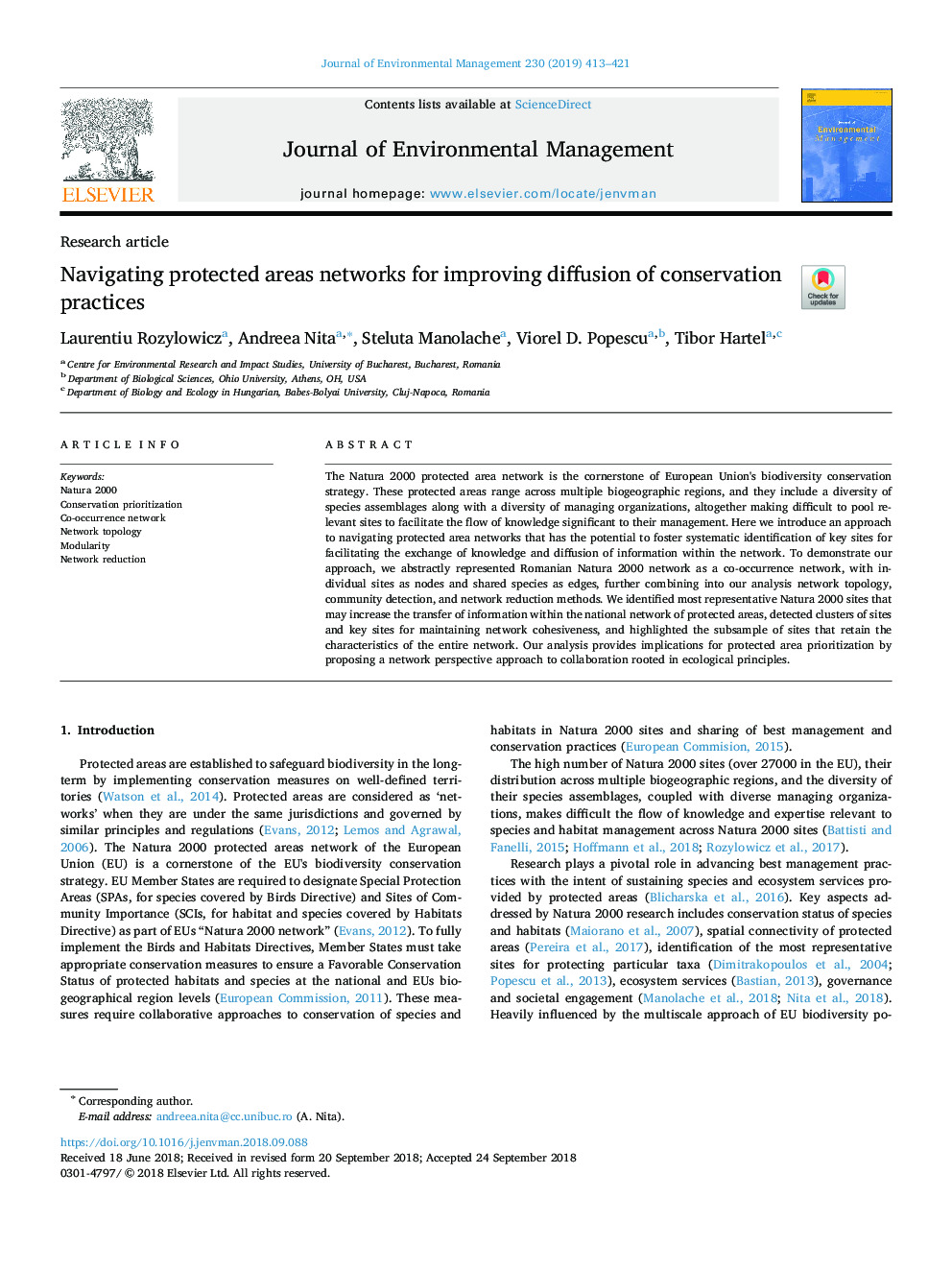| Article ID | Journal | Published Year | Pages | File Type |
|---|---|---|---|---|
| 11023264 | Journal of Environmental Management | 2019 | 9 Pages |
Abstract
The Natura 2000 protected area network is the cornerstone of European Union's biodiversity conservation strategy. These protected areas range across multiple biogeographic regions, and they include a diversity of species assemblages along with a diversity of managing organizations, altogether making difficult to pool relevant sites to facilitate the flow of knowledge significant to their management. Here we introduce an approach to navigating protected area networks that has the potential to foster systematic identification of key sites for facilitating the exchange of knowledge and diffusion of information within the network. To demonstrate our approach, we abstractly represented Romanian Natura 2000 network as a co-occurrence network, with individual sites as nodes and shared species as edges, further combining into our analysis network topology, community detection, and network reduction methods. We identified most representative Natura 2000 sites that may increase the transfer of information within the national network of protected areas, detected clusters of sites and key sites for maintaining network cohesiveness, and highlighted the subsample of sites that retain the characteristics of the entire network. Our analysis provides implications for protected area prioritization by proposing a network perspective approach to collaboration rooted in ecological principles.
Keywords
Related Topics
Physical Sciences and Engineering
Energy
Renewable Energy, Sustainability and the Environment
Authors
Laurentiu Rozylowicz, Andreea Nita, Steluta Manolache, Viorel D. Popescu, Tibor Hartel,
